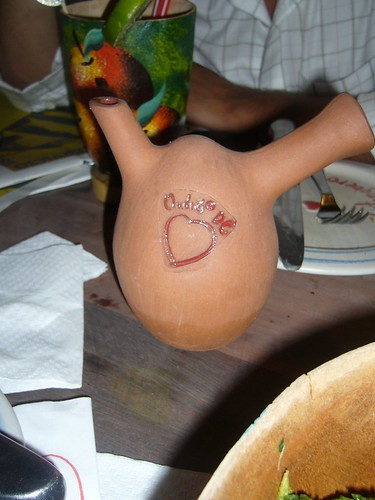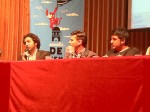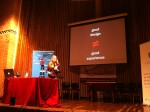
by Luis Alveart
On November 11th, Bogota was one of the many venues around the world hosting this event, which is gathering more and more people every year. In Colombia it has become the main conference for everyone interested and involved with usability. Around 300 people gathered at the World Usability Day – Colombia, something that shows that more professionals and companies are concerned and interested in getting to know more about this topic.
International and local speakers were in charge of presenting different concepts and methodologies related with user experience, information architecture, interaction design and usability.
During this meeting, Zemoga, who was one of the sponsors of the event, showed its leadership on usability in the Colombian market. It became more evident during the panel discussion named “Usability and UX: Trends, methodologies and challenges for the Colombian agencies” where Alejandro Gomez, president and co-founder of Zemoga, made Zemoga stand out for having the biggest user experience team, and implementing different procedures to define a better digital experience.
The event went through three different moments: the local scenario, with interesting talks, by Natalia Vivas, former Zemoga member of the AI team, and Cesar Collazos, about information architecture principles and user-centered design. They both explained important concepts as ubiquitous computing, affordances, mapping and the importance of recognition before remembering.
Then we heard some thoughts about the Latin-American environment through the speech made by Juan Marino and Santiago Bustelo, from Argentina. Marino talked about mental models, paper prototyping and testing for mobile devices and the relevance of defining a process in order to reach best usability practices for mobile applications. Bustelo spoke about interaction design definitions and how we can measure or quantify the efficiency of an interaction model by using the KLM-GOMS (Keystroke-level model). He also pointed out the difference between the sites that inspire us vs. the sites that we actually use and its repercussions when we are defining interaction models.
The best and most expected moment of the day, with no letdowns, was the closing conference by Whitney Hess from New York. She showed us a panorama about usability around the world. Ms. Hess spoke about visual design principles as an introduction of experience design, presenting to the audience different examples of failed projects that went against those principles. Then she pointed out web sites that solve those problems pretty easy. (Check some ideas on her Flickr set “Design in the Wild” and her presentation about design principles on Slideshare.)
She finished her talk by showing us the significance of following our clients’ design principles in order to achieve a better experience and the way we can craft them and use it during a project.
It is amazing to be part of a huge movement like this and be able to work for a better-designed web, fulfilling user experiences.
After all, we need more EMPATHY on the World Wide Web. J
PS. Talking about empathy, it was satisfying to see how a group of deaf people could follow the event because the conference organizers had a sign language interpreter on site. That’s an example of “inclusive design”.
















